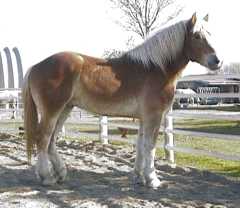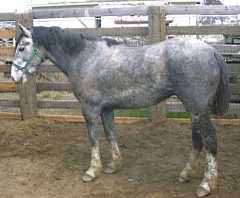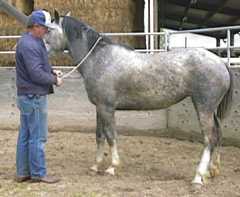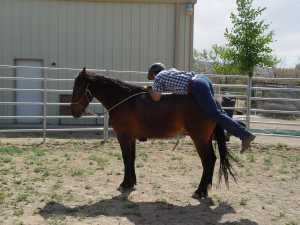Horse Training Mythbusters
|
Taking a load of a hind leg
|
|
The cocked hind leg. There is a common belief that a horse with a cocked hind leg is relaxed and taking a load off. Often this belief is true, but it is a dangerous assumption to make when one doesn't also consider the horse's state of mind. Yes, a relaxed horse will often cock a hind leg to rest it. Some will even flip their hooves completely over. However if the horse is tense or stressed, the cocked leg often means something much more hazardous. A stressed horse will often "unload" its weight off a near hind leg in order to make it available to strike at blinding speed if the handler presses too hard and the horse flashes into fight mode. In this instance the unweighted hoof indicates that the horse is in "primed and ready" mode, and it is usually accompanied by other stress indicators such as a rigid body stance, hard eyes and ears and a tense jaw. When dealing with unhandled, abused or just plain high strung horses, it is important to keep an eye on the near hind leg and not take chances when that hoof is primed and ready. For the first several days of initial work the mare shown on the right would instinctively keep her near hind leg unweighted and ready for action. Although she never actually offered to kick, this posture was one to be watched until she became relaxed around people. Once she gave up this posture she was generally much easier to school, saddle and eventually ride. |
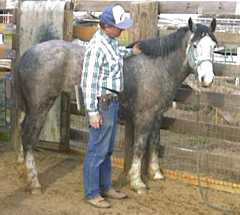
|
|
Stopped horse - locked and loaded?
"I don't know what happened. One moment the horse was standing still. In fact he didn't want to move. Next thing I knew he blew up and I was flying through the air." When training horses we try to teach them a few things. Move away from pressure. Change directions. Stand still. But sometimes the horse does some of these things on his own. I like a horse that will stand still and wait for a cue to move. However some horses simply get locked up and if provoked will suddenly and unpredictably react with some violence. We believe that this "locking up" or "bracing" is a stress related behavior. Whether because the horse has been insufficiently desensitized to packing a rider, can't find a comfortable balance or has other issues, the inexperienced horse that won't move when packing a rider can become volatile. Our recommendation is to quietly but expediently dismount, work the horse in ways that are relaxing to him, get the horse comfortable moving out and bending to cues, make sure he is appropriately desensitized to having a rider on board and then retry the mounting and riding experiment. |
This horse trusts his rider but is obviously tense in this situation and shouldn't be asked to walk off.
|
Please continue to Part FourReturn to Part Two
|

